Choosing the Right On-Road RC Tires and Wheels
Whether you’re ready to replace your on-roader tires, looking for street-friendly rubber to install on your off-road machine, or need to choose a set of sneakers for your competition touring car, you’re in the right place. This article digs into everything you need to know about on road RC tires and wheels.
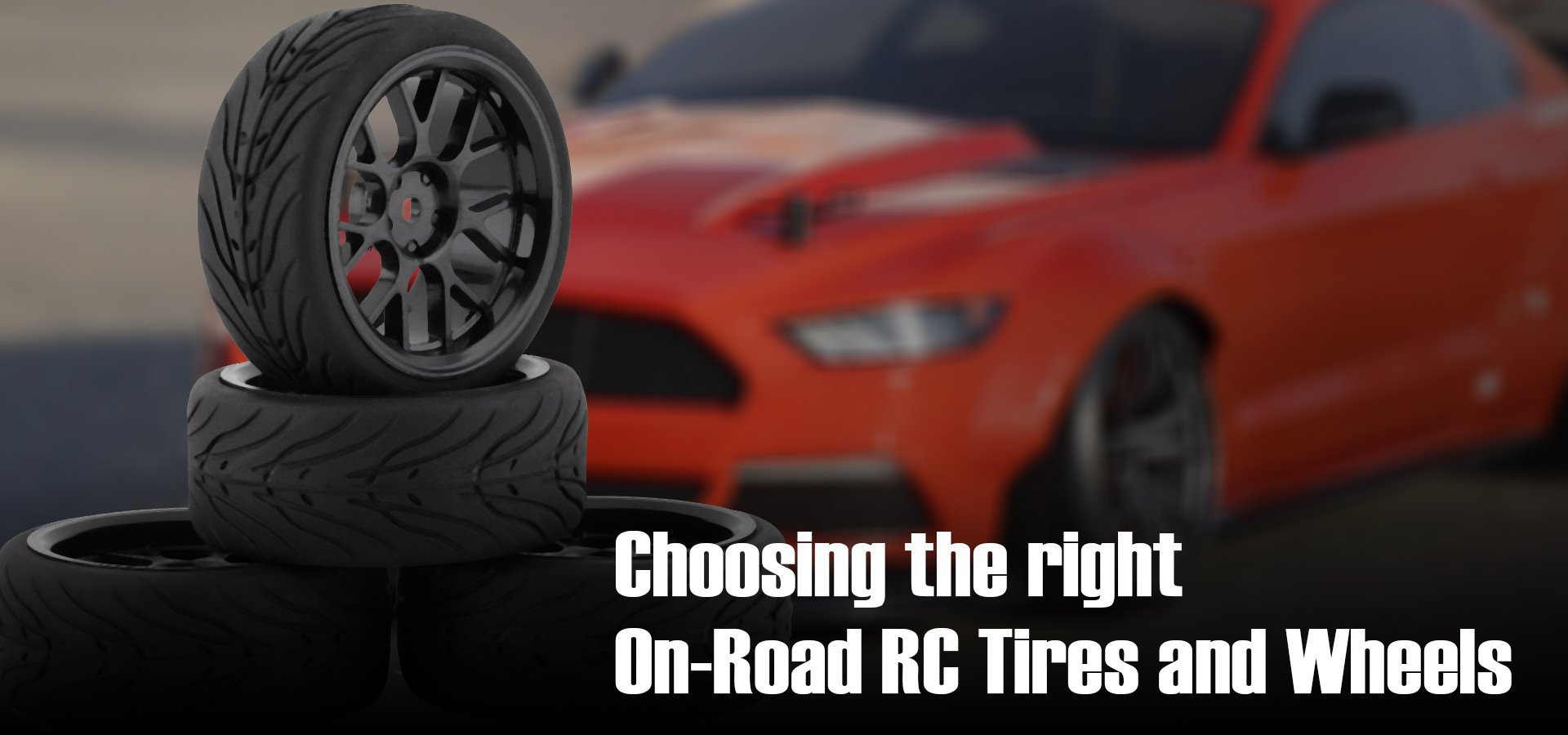
Before We Begin
Before we get into RC on road tire and wheel designs, check out Choosing the Right Off-Road Wheels & Tires. The sections on what wheel size refers to; how to make sure you’re choosing wheels that fit; and the pros and cons of buying pre-mounted tires versus separate RC tires and wheels to glue yourself also apply to choosing on road RC tires and wheels for your on-road machine.

If you’re looking to put street tires on your off-roader, Choosing the Right Off-Road Tires & Wheels has the info you need to find what fits.
Touring Car Tires
The biggest category for on-road tires is 1/10 scale touring cars, and chances are you’re reading this article because that’s what you’re hoping to find. Touring car wheel fitment is easy, as all brands use wheels with a 12mm hex. And because ROAR rules mandate a maximum width of 24mm and diameter of 50mm, any wheel sold for competition will have those specs. So, if you’re racing 1/10 touring car class, wheels are easy; if you’re not racing, you’ll also have to consider wheel and tire width and wheel offset. So, let’s get into it.
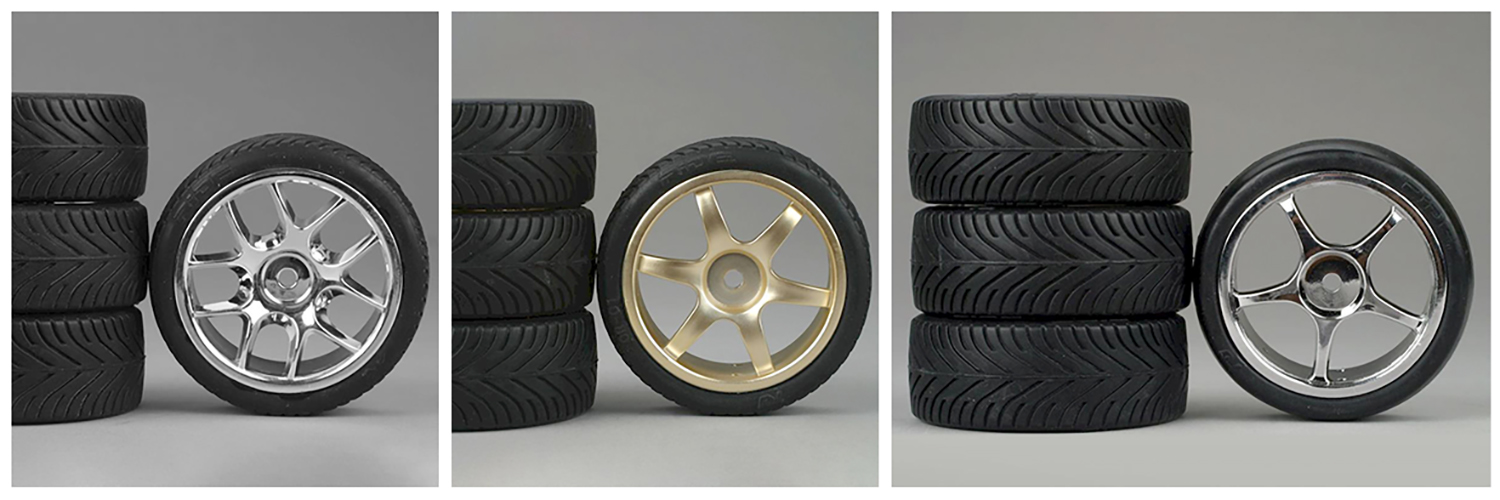
You’ll find a wide variety of touring car wheel and tire designs at AMain Hobbies. These styles are from Duratrax.
Wheel Width
1/10 scale touring car wheels are generally 24 or 26mm wide, and virtually all tourers can accept either size without issues. Some models, especially those designed for maximum realism, may have even wider tires or even front and rear tires of different widths. Style and realism considerations aside, wider tires offer a larger “footprint” and thus more traction. If you’d like more grip without the increased wear of a soft-compound tire, consider going wider instead of softer. As mentioned previously, and tourer should accept 24 or 26mm wheels with no trouble, but 30mm or larger wheels may rub on the shocks or suspension. If you’re unsure, test-fit before you buy.
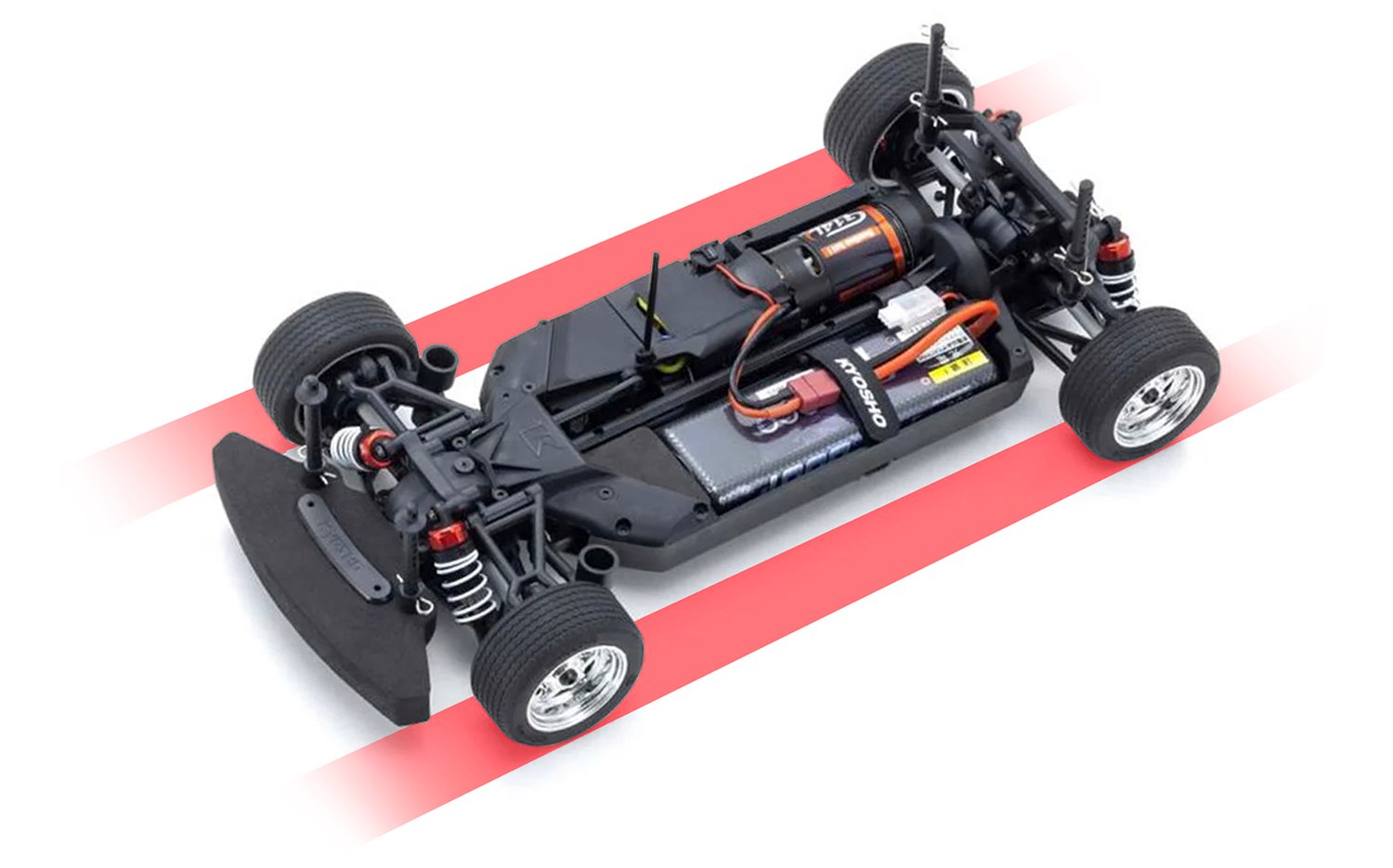
Like this Kyosho Fazer, most touring RC car tires and wheels are identical in width, front and rear.
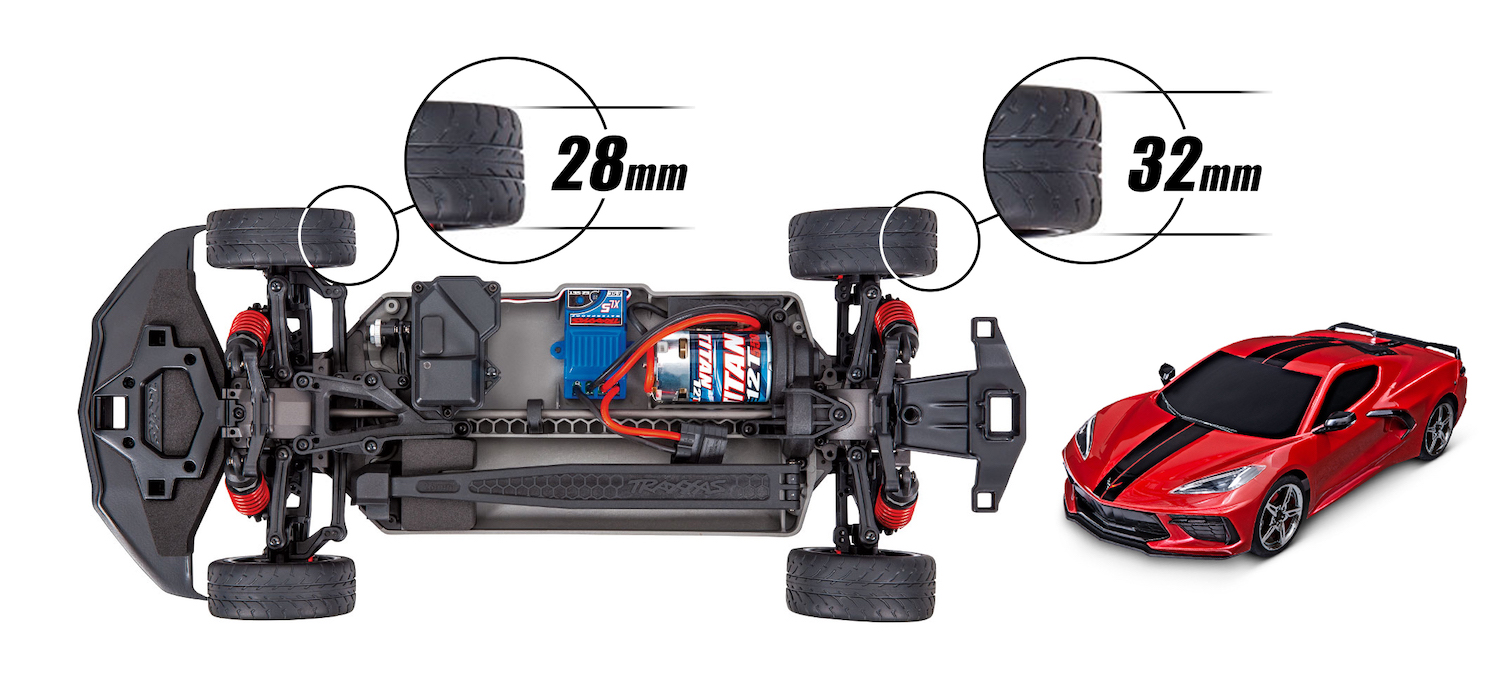
Like the Traxxas Corvette Stingray, some cars feature wider wheels in the rear.
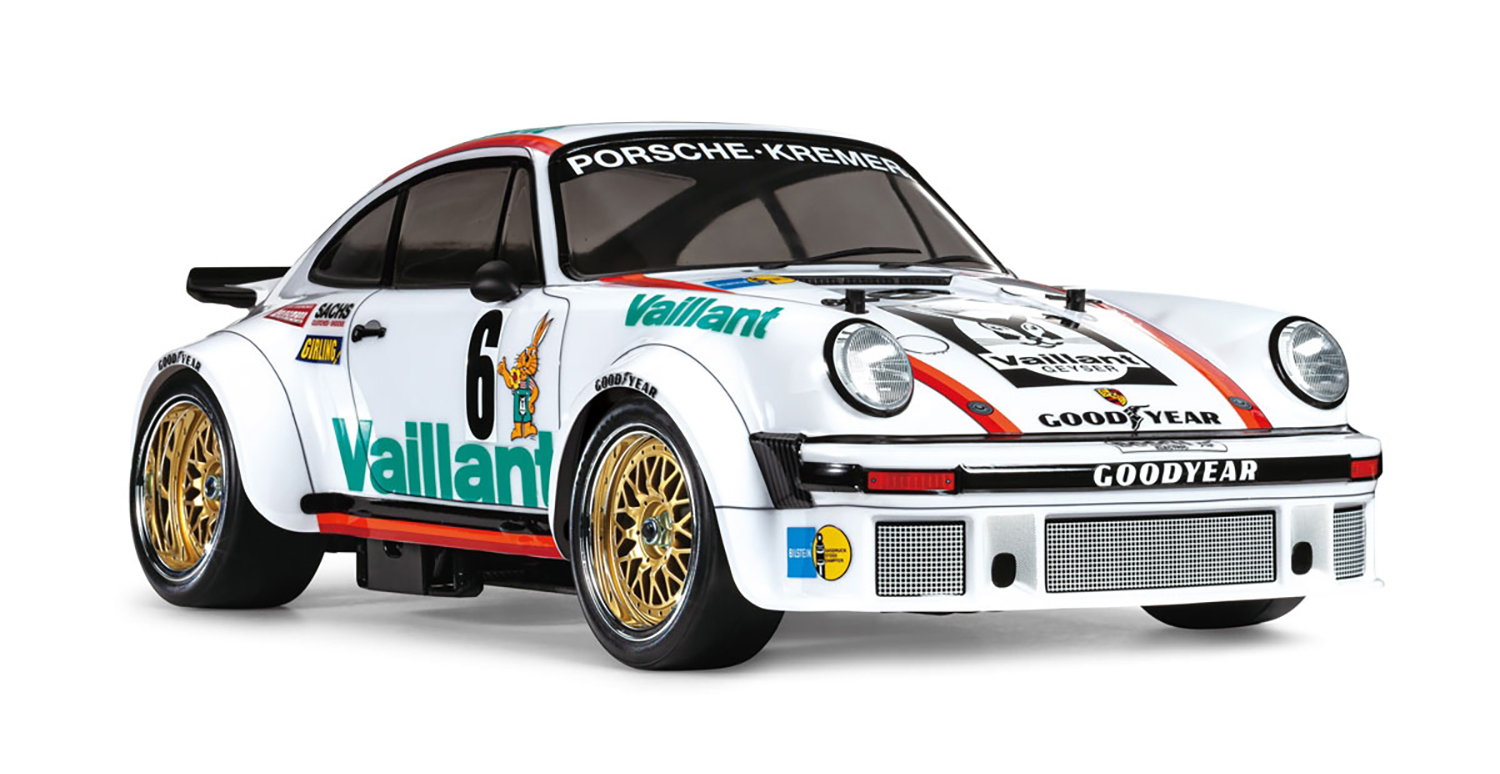
Tamiya equips this Porsche 934 model with extra-wide slicks to duplicate the full-size car’s signature proportions.
Wheel Offset
You probably won’t need to worry about selecting the correct offset when shopping wheels, but it’s good to understand the concept. Offset refers to the position of the wheel hub in relation to the width of the rim.
If the rim is constructed, so the face of the hex hub is aligned with the center of the wheel, the rim has zero offset. If the hub is behind the centerline of the rim, the wheel has a positive offset, and if the hub is ahead of the centerline, it has a negative offset. Your model’s manual will tell you if your car requires or includes wheels with a non-standard offset.
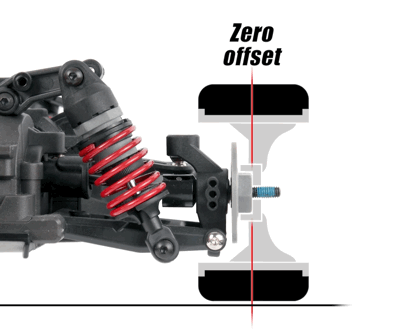
For example, if the wheel offset is +3mm, the hub face is 3mm behind the wheel’s centerline. If you get the “wrong” offset, the wheels should still fit, but the distance between the wheels will be narrower or wider depending on the difference in offset between the correct wheels and your “wrong” ones. Additional negative offset isn’t usually a problem, and you may like the wider look. However, additional positive offset may be a problem if it results in clearance issues between the wheel and suspension or steering parts.
Drift Tires & Wheels
We’re used to thinking about tires as something you choose to increase traction, but if you’re into drifting, reducing traction is the name of the game. Instead of rubber, drift tires are made of hard, slick plastic, so it’s easy to spin the tires and maintain drift angle. And while drift cars are highly optimized for drifting, they still match standard 1/10 scale touring car dimensions, and you can get into drifting simply by installing drift tires on your touring car. Drift tires and wheels can be purchased separately, but pre-mounted tires are highly recommended, as the hard plastic tires can be tough to coax onto the wheels.
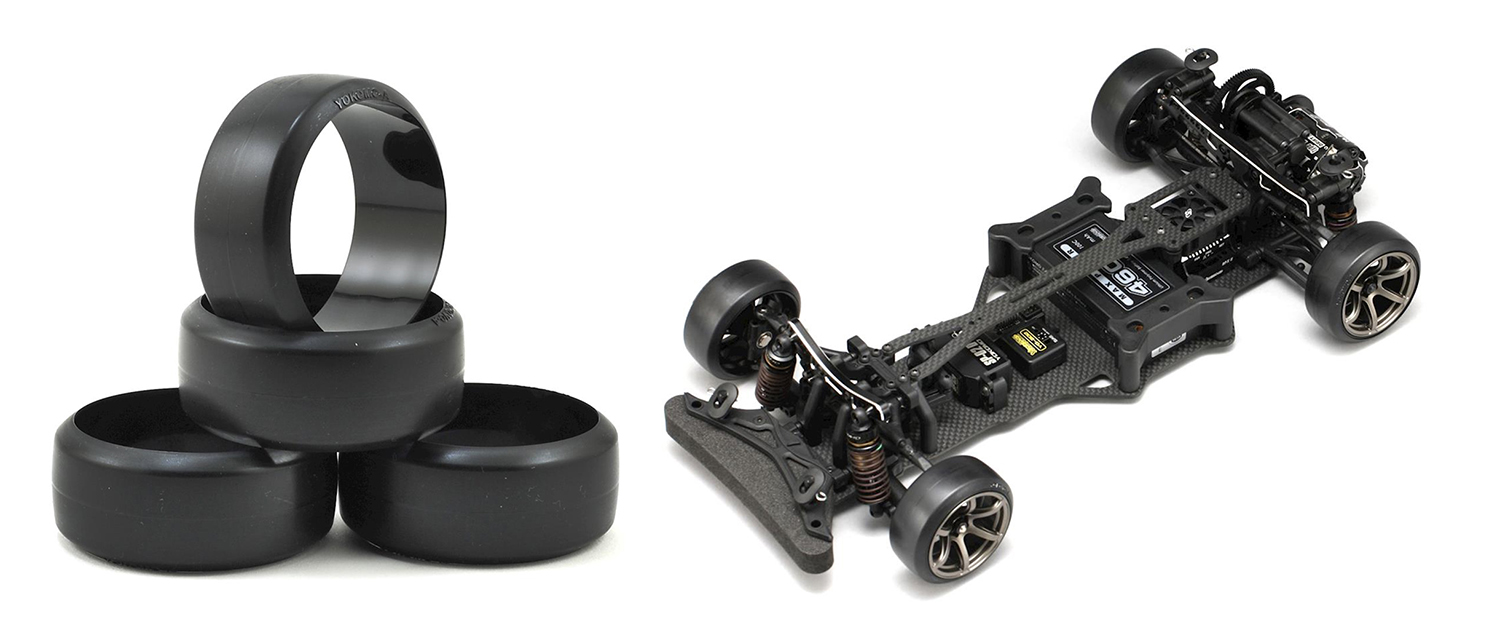
Drift tires are made of hard plastic for low traction and endless drifts. Drift cars like this Yokomo YD-2R Plus are optimized for drifting, but you can get started in drifting by installing drift tires on any touring car.

Some drift tires feature a beveled edge to enhance drifting performance, like these Yeah Racing Spec D and Firebrand Blade designs.
Touring Tires for Competition
Since racing rules strictly control wheel and tire size, you won’t have to worry about getting the right size wheels for your 1/10 scale car. And with aerodynamics playing an important role in racing success, you won’t be looking at many different styles, either—dish wheels dominate, though there are some exceptions. Instead, the thing you will need to zero in on is the tire’s rubber compound. Compounds vary in hardness, idealness for carpet and paved or concrete surfaces, and performance in different temperatures. For example, Schumacher’s Sorex brand defines its compounds like so:
Sorex Tire Compounds:
24R: Track temperature up to 72 degrees—Works great for stock or modified electric racing. (Carpet tire)
28R: Track temperature from 68 to 84 degrees—Minimal tire wear. (Great asphalt tire)
32R: Track temperature from 81 to 96 degrees—Great for outdoor racing on asphalt.
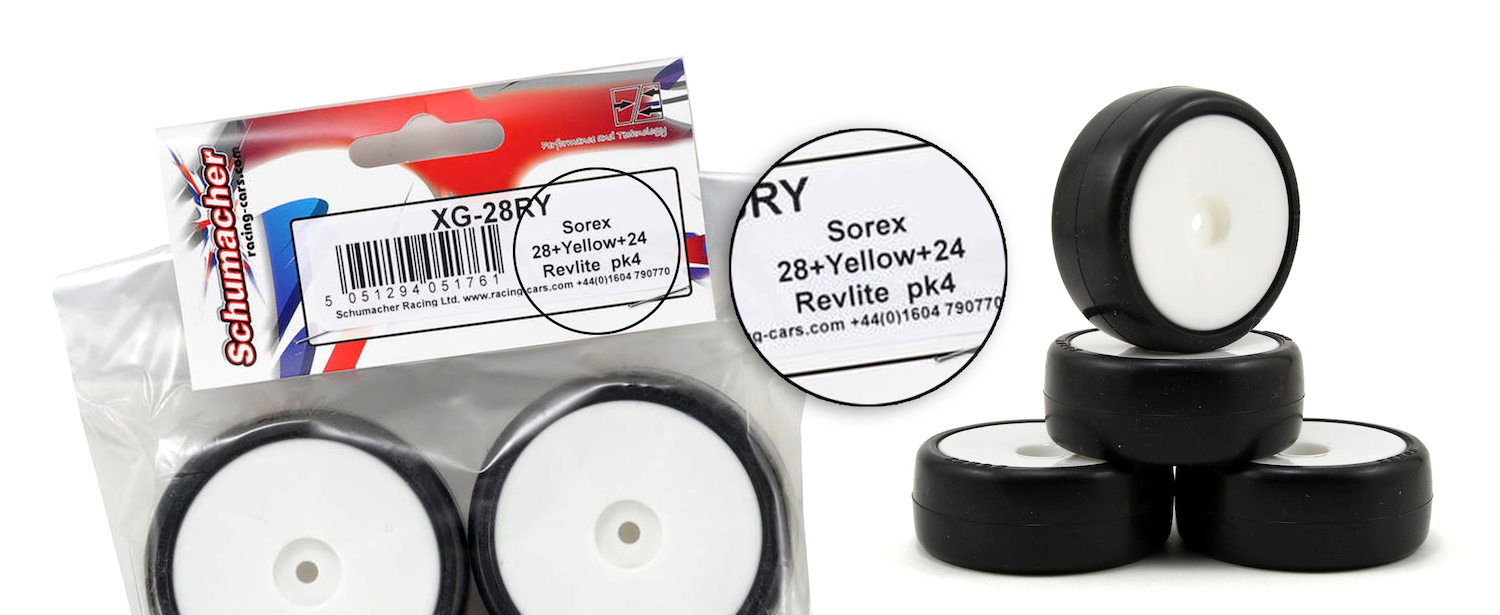
Competition touring car tire selection is all about choosing the right compound.
Touring cars may also race on foam tires, though rubber tires are much more common for electric racing at most tracks. Tire foam hardness is generally listed as a shore number between 32 and 45, with firmness and wear resistance going up with the number. Again, as with tire selection for RC or full—scale racing, seeing what works for the competition is the best place to start.
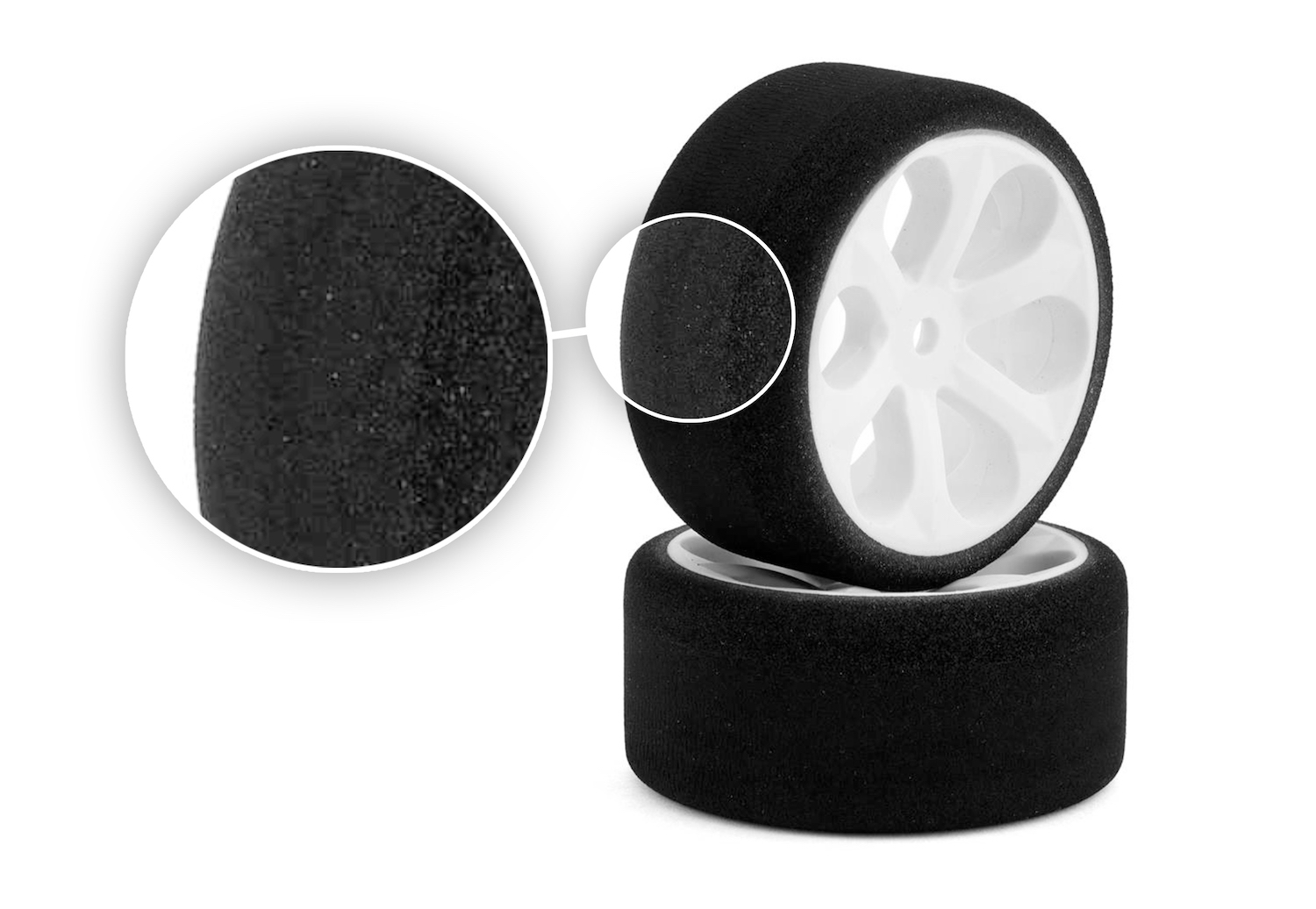
Foam tires are lightweight and offer outstanding performance on carpet but aren’t as durable as rubber.
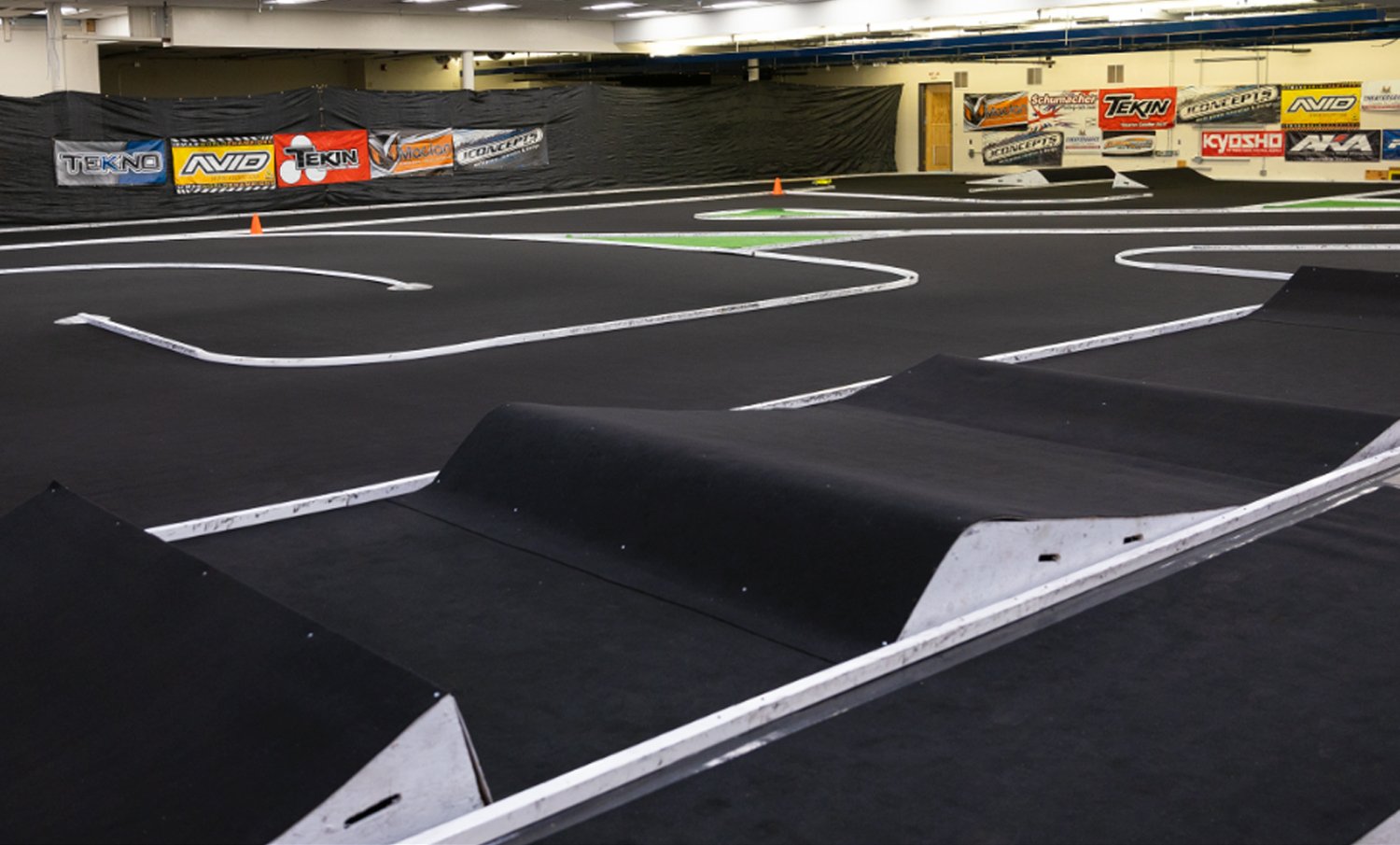
Your local carpet track may offer both rubber-tire and foam-tire classes. Visit to see which classes look like the best match for you and get tire-buying advice before you outfit your car
Vintage Trans-Am Wheels & Tires
As the name explains, the Vintage Trans-Am class dresses up your touring car as a competitor in the SCCA’s Trans-American Championship of the late-60s and early-70s—the golden era of muscle car racing. Protoform’s VTA-specific rubber tires are made of a long-wear rubber compound that makes them good choices for fun driving and actual VTA competition. The tires are available mounted on vintage-style wheels as fronts and rears. The “fronts” are 26mm wide with zero offset and can be used front and rear with 190mm bodies. The “rear” wheels are 31mm wide with 6mm of offset to fill the wide rear fenders of Protoform’s VTA bodies.
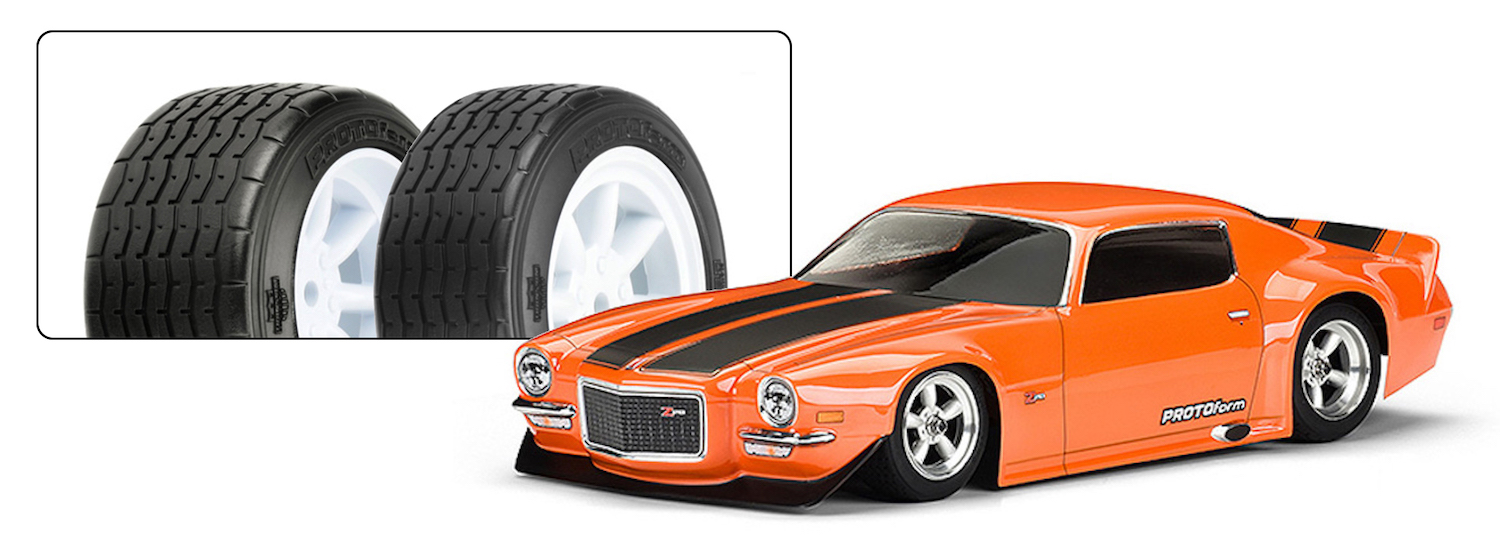
Protoform’s VTA RC car tires and wheels look great on and off the track.
There you have it—the essentials of on-road tires. When shopping tires at AMain, you can filter by surface type, size, compound, brand, and more, so it’s easy to find the right tires for your machine. You can also chat with us for tire-selection advice. Just tap the chat icon in the upper right corner of the screen (desktop users) or select chat from the upper-left menu if you’re mobile.
